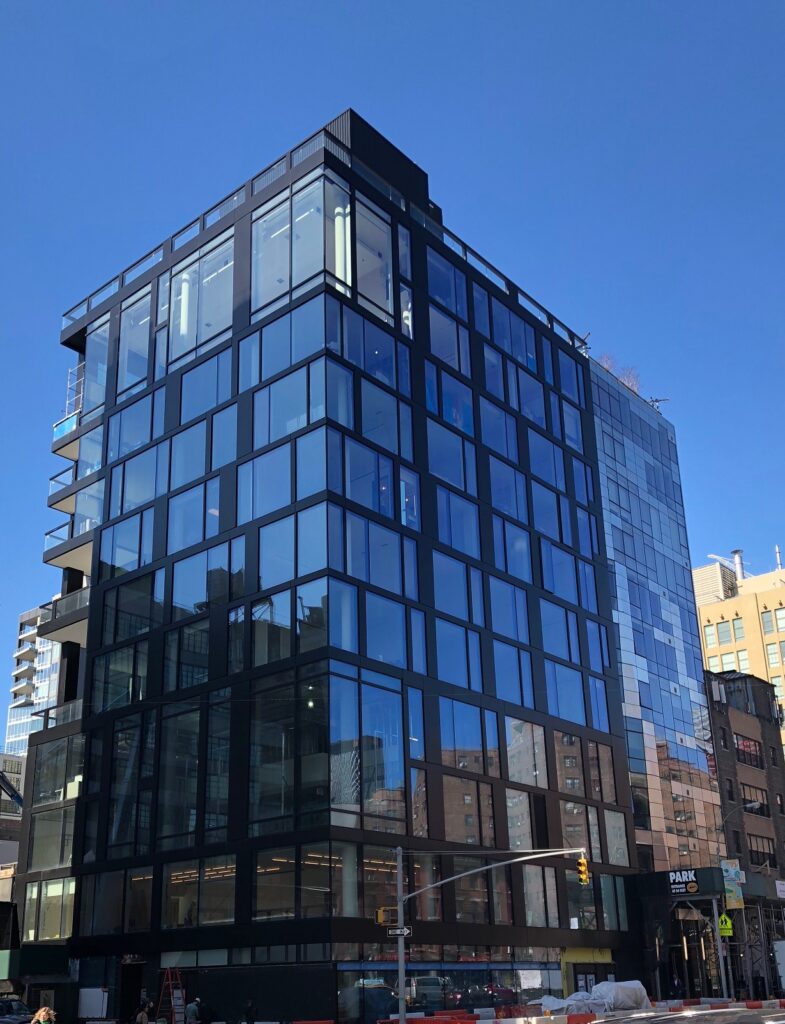
Introduction
© Carl Dellatore, September 9, 2016
On rare occasions, a leading architect will produce a building that is, by general critical consensus, an indisputable masterwork. A structure of such vigorous imagination and skillful execution that it transcends its ostensible function to become a work of art.
Few pieces of architecture, even those by acknowledged masters, achieve this pure aesthetic state. The real world of politics and economics almost always intervenes, compromising the initial vision and constricting its full realization. But now and again, the stars align, and alchemy happens: Client, project, site, budget, and the historical moment all prove miraculously correct, and the architect can create a building that is completely unified in conception and actualization from the most significant principle to the smallest detail—in short, a masterwork.
The Getty, architect Peter Marino’s stunning new 12-story residential building in Manhattan’s West Chelsea neighborhood, has all the hallmarks of a masterwork. The bronze-and-glass building replaces a Getty gas station—hence the development’s name—next to the High Line at the heart of the city’s contemporary gallery district and a stone’s throw from the Whitney Museum of American Art’s stunning new home. Thanks to the success of the elevated park and the arty cachet of its environs, the neighborhood has become a magnet for affluent young creatives, collectors, and tastemakers. The architecturally daring Getty was designed to appeal to this aesthetically sophisticated, art-savvy audience. From its genesis, the architect and his client, real estate developer Michael Shvo, thought of the project as a work of art, an approach mandated by the site itself.
An irregular grid of black bronze beams and columns frames the Getty’s exterior, giving it the appearance of a three-dimensional Mondrian painting or a monumentally scaled geometric sculpture. Marino has a particular affinity with the alloy: “I collect 16th and 17th-century bronze figurative sculptures, and I make bronze art myself,” he says, referring to a series of cast-bronze boxes he has exhibited recently. “The material has life; it changes and gets more beautiful with age.”
More than just a pleasing aesthetic composition, the Getty’s graphic façade is a precise expression of the building’s interior spaces, which include an art gallery and eight entirely unique apartments. “Designing a building where no two apartments are the same is very challenging,” Marino says. “There are floor-throughs, duplexes, and partial duplexes with different layouts, square footage, and ceiling heights. We treated the section like a jigsaw puzzle, and the façade closely reflects those changing interior dimensions. I believe in the total integration of the inside and the outside of a building, and I think we’ve achieved it here.”
Marino has further individuated the apartments by specifying different materials and finishes in each residence. “Creativity starts with a sensual impression,” says the architect, who uses a wide variety of woods, stone, and leather to conjure eight unique living environments. This obsessive attention to detail, which grows out of Marino’s firm belief in individuality as the superlative luxury, is driven by the same creative imagination that conceived the building as a whole. The Getty’s internal unity mirrors its deep organic connections to the city, culture, and life around it—connections that give architecture the right to be considered a masterwork.